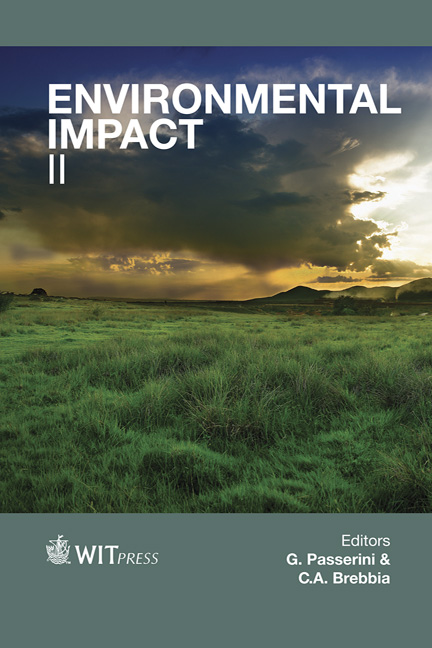The Environmental Impact Of Human Activities On The Mexican Coast Of The Gulf Of Mexico: Review Of Status And Trends
Price
Free (open access)
Transaction
Volume
181
Pages
14
Page Range
37 - 50
Published
2014
Size
1805 kb
Paper DOI
10.2495/EID140041
Copyright
WIT Press
Author(s)
J. A. Benitez, R. M. Cerón-Bretón, J. G. Cerón-Bretón & J. Rendón-Von-Osten
Abstract
The Mexican coastal zone of the Gulf of Mexico and Caribbean (CZGMC) is an important source of ecosystem services related to biodiversity, biological productivity, and nutrient balance. This region contains more than 50% of national wetlands, near 6,000 km2 of coastal lagoons, 24 estuaries, and the most extensive areas of coral reef in Mesoamerica. These habitats holds more than 8,500 species of marine invertebrates and fishes, 328 species of birds, 29 species of marine mammals, and share 5 out of the 11 species of current marine turtles. Its biological productivity ranges 100–2000 mg C m2 d-1. Biodiversity and natural productivity in the CZGMC are connected to the integrity and health of coastal habitats. This paper analysed the main ecological features and the socioeconomic indicators for this region. Using GIS tools, census data, and geographic databases we compiled information from the last 30 years to assess anthropogenic impact sources, and determine trends on levels of pollution in coastal environments. Oil industry, tourism, fisheries, marine transportation, cattle ranching, and agriculture are the main economic activities on the CZGMC, which contribute more than 16% of the Mexican GDP. The current population on the six Mexican estates that border the Gulf is more than 17 106. One third of this population live within a narrow corridor of three km from the coastline. Within this area, human activities have cleared 65% of natural vegetation, causing the direct loss of habitats, which leads to a reduction of biodiversity. Also, the coastal population in this area produce near 1 106 t y-1 of solid waste and about 1,500 106 m3 of wastewater, which have led to water quality deterioration.
Keywords
Gulf of Mexico, Caribbean Sea, pollution, environmental impact trends, anthropogenic activity, heavy metals, atmospheric pollution





